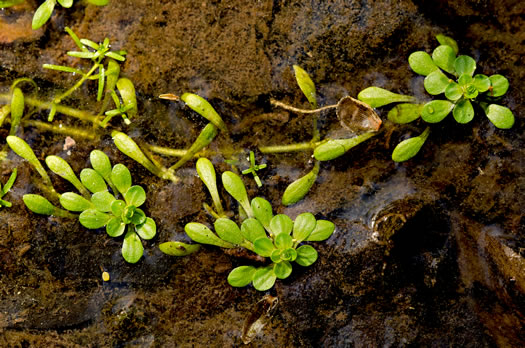Hovering over an image will enlarge it and point out features (works better on desktop than on mobile).
![]() A camera indicates there are pictures.
A camera indicates there are pictures.
![]() A speaker indicates that a botanical name is pronounced.
A speaker indicates that a botanical name is pronounced.
![]() A plus sign after a Latin name indicates that the species is further divided into varieties or subspecies.
A plus sign after a Latin name indicates that the species is further divided into varieties or subspecies.
Most habitat and range descriptions were obtained from Weakley's Flora.
Your search found 2 taxa in the family Callitrichaceae, Water Starwort family, as understood by Vascular Flora of the Carolinas.

![]()
![]() Common Name:
Waterstar, Common Water-starwort, Two-headed Water-starwort
Common Name:
Waterstar, Common Water-starwort, Two-headed Water-starwort
Weakley's Flora: (4/24/22) Callitriche heterophylla var. heterophylla FAMILY: Plantaginaceae
SYNONYMOUS WITH PLANTS National Database: Callitriche heterophylla ssp. heterophylla FAMILY: Callitrichaceae
INCLUDED WITHIN Vascular Flora of the Carolinas (Radford, Ahles, & Bell, 1968): Callitriche heterophylla 109-01-001 FAMILY: Callitrichaceae
Habitat: Pools, slow-moving streams, ditches
Common in Carolina Coastal Plain (uncommon elsewhere in GA-NC-SC)
Native to the Carolinas & Georgia

Common Name: Pond Water-starwort, European water-starwort
Weakley's Flora: (4/24/22) Callitriche stagnalis FAMILY: Plantaginaceae
SYNONYMOUS WITH PLANTS National Database: Callitriche stagnalis FAMILY: Callitrichaceae
Habitat: Ponds, stagnant water, wet soil
Non-native: Europe /possibly native in some areas
Your search found 2 taxa. You are on page PAGE 1 out of 1 pages.


